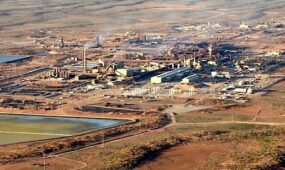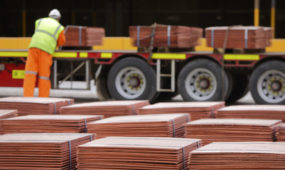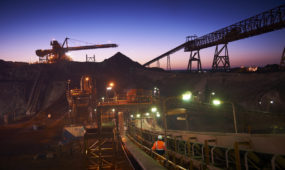Bacteria provide clue to locating platinum deposits
Mining & Resources
THE discovery of the role played by bacteria in the formation of platinum in surface environments could have major implications for the future exploration of the highly prized metal.

Sign up to receive notifications about new stories in this category.
Thank you for subscribing to story notifications.
Australian scientists, led by the University of Adelaide in South Australia, linked specialised bacterial communities found in biofilms on the grains of platinum group minerals at three separate locations around the world.
Dr Frank Reith, Senior Lecturer in the University of Adelaide’s School of Biological Sciences and Visiting Researcher at CSIRO Land and Water said finding new deposits of platinum group metals was becoming increasingly difficult due to a limited understanding of the processes that affected the way they were cycled through surface environments.
“This research reveals the key role of bacteria in these processes. This improved bio geochemical understanding is not only important from a scientific perspective but we hope will also lead to new and better ways of exploring for these metals,” lead researcher Dr Reith said.
“One of the difficulties with finding deposits of platinum is that we need to understand the exploration signals that we get and we don’t know exactly how platinum travels in earth surface environments and what the mechanisms are that are involved.
“What we were trying to understand in this study is that biological mechanisms can be involved in the transformation of that platinum in certain environments.”
Dr Reith said the research could allow the development of a different style of exploration using biological entities and a technique known as next generation sequencing.
He said searching for specific micro-organisms associated with platinum group metals could lead exploration companies directly to new deposits under the surface.
“It is very similar to when police look for a suspect. They find a cigarette butt somewhere and extract the DNA and then they get a fingerprint and they can match it to the suspect. In very simple terms we can do the same with microbial communities in soil sediments,” Dr Reith said.
“If there’s interest from industry we can then extend that research into finding tools for exploration.”
The study, published in the journal Nature Geoscience, investigated platinum group elements from Brazil, Colombia and the Australian state of Tasmania.
The researchers, which included groups from Monash University, Mineral Resources Tasmania, University of Queensland, University of Western Australia, RMIT and the Federal Institute for Geosciences and Natural Resources, Germany, found live bacterial biofilms on mineral grains from all three sites using scanning electron microscopy.
These biofilms had been suggested previously but were never before shown to exist.
They also showed that the mineral grains found at the Brazil site were bio-organic in origin, further supporting the role of the bacteria in the secondary formation of platinum grains.
The work builds on more than 10 years of research in gold, which has uncovered the role of micro-organisms in driving the Earth’s gold cycle
Platinum group metals, especially platinum and palladium, are highly prized noble metals used in a wide range of industrial processes. South Africa and Russia are the two biggest platinum producing nations. Ensuring adequate supplies is challenging and enhanced exploration is considered a global priority.
Platinum is among the rarist and most expensive metals in the world, regularly tops US$1000 an ounce and at times is pricier than gold.
The University of Adelaide is one of three long-standing public universities in the South Australian capital Adelaide along with Flinders University and the University of South Australia. All three universities are consistently rated highly in the international higher education rankings.
Jump to next article



